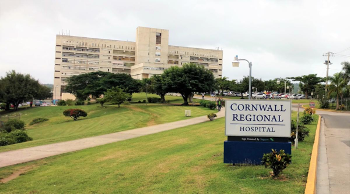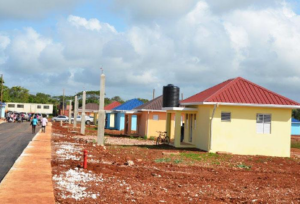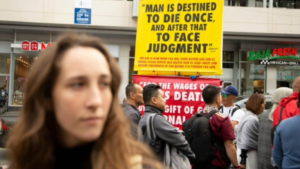A most painful video of a weeping woman mourning the unexpected death of her beloved mother after she was admitted into the public health system went viral last week.
The episode, which shook even the hardest of hearts, detailed the litany of woes ordinary Jamaican folk face when they are forced to subject themselves to the ramshackle health system that promises very little hope for the majority.
Check social media if you are looking for familiar pictures of patients sleeping on stone-cold floors or sitting up for days in lopsided chairs in the corridors of freshly refurbished and thickly overcrowded hospitals.
Just days ago, the University Hospital of the West Indies advised members of the public that they should expect delays amid a steady rise in patients seeking emergency care at its facility.
From extraordinarily long waits to the lack of bed space, to the malfunctioning of critical diagnostic machines, to missing medicines and the mismanagement of simple procedures and processes, things are beyond shaky and slipping fast in the public health sector.
It is true that there may be cases of negligence among some in the health sector, but for the most part, well-trained doctors, nurses, and others, armed with the patience of Job, push against insurmountable odds, race against time, and brace against routine roadblocks in order to deliver miracles in a system where death could easily be the certain outcome for too many.
In recent weeks, at least one baby has died for the want of a ventilator, several aged people have expired on pop-down chairs, and nurses on wards are still complaining that hospital dispensers have no stock of much-needed medicines that are usually readily available in private pharmacies.
The stories are rife with relatives of the sick rushing from pharmacy to pharmacy on a treasure hunt for medication that hospital pharmacies do not stock. Private pharmacies have been coming to the rescue of dying patients in public hospitals at all hours of the day and night, mostly at exorbitant c
osts.
One can be sure that the majority of CT scan, ultrasound, ECG, x-ray, and MRI machines are not in working condition in public health facilities and that patients must be transported to private rooms for diagnostic tests. With so many public health care services reliant on private hands, the cost of accessing free health care is astronomical.
In April 2008, when the government, led by then Prime Minister Bruce Golding, took a huge political risk to abolish user fees at public health facilities, giving all Jamaicans access to health care free of charge, there was some pushback from doctors in the system. We did not need a prophe

t to predict that reduced funding from user fees would spell trouble for the sector.
The government was determined to take the political gamble, and now, the people have not only lost but are suffering for it.
While free health care was largely welcomed, it slammed the door shut on a steady funding stream for the sector and punched a huge hole in the public health budget, which the government knew it could not plug.
According to the World Health Organization data, Jamaica is 53rd in the world for the effectiveness of its health care system, recording only one doctor per 2,000 people, which is quite low on a world scale. The doctor-patient ratio demands that patients must wait for long hours to see a medic whenever they interface with the public health sector. Doctors on duty are forced to work in rundown facilities, pushing through tired eyes to see just one more patient in back-to-back shifts.
The sector continues to struggle with longstanding matters of pay, work conditions, and senior management’s failure. This ongoing discontent shows up in the unending exodus of doctors, nurses, and other healthcare workers to hospitals overseas, weakening the already failing system. Despite the fact that new batches of graduates enter, they all exit at the drop of a hat.
According to health minister Dr. Christopher Tufton, there has been a significant increase in the cadre of workers, with more doctors, nurses, and community health aides now on duty. But, the revolving door for doctors and nurses exiting the system and boarding flights to the United States, Canada, and the United Kingdom is overused and creaking on its hinges. Even young graduates, picking up the slack on a contractual basis, eventually join the departure line.
There have been calls for Jamaica to develop a calculated, long-term plan to solve staffing issues in the healthcare sector, but these calls seem to have fallen on deaf ears.
Universal health coverage (UHC), which is one of the targets of sustainable development goals, aims to ensure that “all individuals and communities receive the health services they need without suffering financial hardship.” In 2017, Jamaica’s UHC was last estimated at 65%, which is below the approximate mean of 75.4%. Not much has changed since then.
The health minister has made it known that the transformation of the public health sector requires an expansion of expenditure. But, despite the fact that the government has increased the country’s public health budget over the past years, the decadence remains the same or has even worsened.
Already, the estimated cost of refurbishing the Cornwall Regional Hospital in St. James alone is now $21.4 billion, sending many jaws crashing to the ground.
This unending project, funded by taxpayers, is laced with overruns, missed deadlines, and skyrocketing bills and has the putrid stench of mismanagement, waste, and even corruption.
Regardless of where one is located in Jamaica, the public health care system reeks of lack, disorders, and mismanagement of scarce resources.
The minister in charge of health care is a doctor of marketing, skilled in selling ice to the Eskimos, and has managed to do just that with the rebranding of the treacherous obstacle course that Jamaicans must tackle for the sake of healing.
Frequent announcements and social media postings of peace benches and refurbishing projects from the health ministry would give the impression that things are going well in the sector. But those who feel it, know it, and do not like it one bit.
As the wailing daughter lamented her mother’s demise, for too many Jamaicans, the story is way too familiar. The rot in the public health sector is unbearable, and the announcements of investigations and the marketing of a fancy narrative around the dilapidation will not fix it. Minister Tufton, a pig with lipstick is still a pig!






